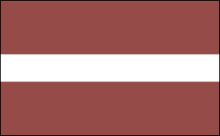

Wyświetl większą mapę
Bańska Bystrzyca jest sporym miastem (80.000 mieszkańców) i jest głównym miastem okręgu. Miasto otrzymało prawa miejskie z rąk Beli IV, króla Węgier już w 1255 i wiązała się z bogatymi złożami rud metali. Wydobywano tu złoto i srebro, a później także miedź, rtęć i ołów, więc miasto stało się niezwykle bogate. Złoża wyjałowiono dopiero w XVIII w. i miasto nieco podupadło, zmieniając kierunek zarobków. Do II wojny światowej działało tu wiele zakładów produkcyjnych. W 1944 wybuchło Słowackie Powstanie Narodowe, a po wojnie nastąpiła intensywna industrializacja.
Banska Bystrica is a big town (80.000 inhabitants) and it's main town in the region. It got city rights in 1255 from Bela IV, the king of Hungary and it was connected to the big amount of different metallic ores. There were mines of gold, silver, copper, lead and mercury, so the town became incredibly rich. They ran out of ore in XVIII c. and the town lost the money and had to change the branch. Till the II World War there were many factories here. In 1944 Slovak National Uprising raised and after the war the town started to be industrialised.
 Pomnik Powstania Słowackiego
Pomnik Powstania SłowackiegoMonument of Slovak National Uprising

 Baszta z restauracją
Baszta z restauracjąThe keep with a restaurant inside.
 Wokół parku, za murami miasta jest muzeum z plenerową wystawą sprzętu wojskowego.
Wokół parku, za murami miasta jest muzeum z plenerową wystawą sprzętu wojskowego.Around the park, in the city walls there's a military exhibition.



 Ratusz i kościół katedralny św. Franciszka Ksawerego.
Ratusz i kościół katedralny św. Franciszka Ksawerego.town Hall and a cathedral of St. Frank Xavery.
 Wieża zegarowa
Wieża zegarowaClock tower.
 Kamieniczki na rynku
Kamieniczki na rynkuHouses in the main market
 Kościół NMP
Kościół NMPSt. Mary's church.

 Widok na miasto
Widok na miastoA view on the town.
 Zamek miejski
Zamek miejskiCity castle
 Szopka na rynku
Szopka na rynkuThe Nativity scene on the main square
 Wieża zegarowa i katedra
Wieża zegarowa i katedraClock tower and the cathedral




 Zamek i barbakan
Zamek i barbakanThe castle and the barbakan


 Cmentarz miejski
Cmentarz miejskiCity cemetary



 Zaśnieżony rynek.
Zaśnieżony rynek.Main square covered by snow



















Brak komentarzy:
Prześlij komentarz